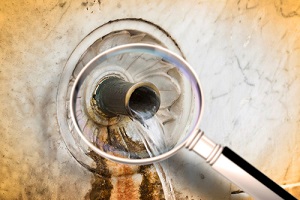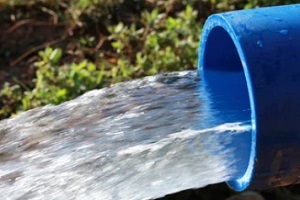 Bacteria are an ever-present part of the world around us, occupying the outer layer of our skin, living in our food and even swimming in the water we drink. Unfortunately, some bacterial varieties like Legionella Pneumophila pose a significant health risk.
Bacteria are an ever-present part of the world around us, occupying the outer layer of our skin, living in our food and even swimming in the water we drink. Unfortunately, some bacterial varieties like Legionella Pneumophila pose a significant health risk.
Every building with water piping should implement a Legionella prevention plan to avoid an outbreak. One Legionella prevention method is to always keep the building’s water running and avoid water stagnation.
Why Does Running Water Prevent Legionella?
The Legionella bacteria thrives in water—specifically fresh water at temperatures between 68 and 113 degrees Fahrenheit. This is the optimal range for human consumption as well, and even non-potable water is often kept at this temperature due to environmental factors. When water stagnates, it is easier for Legionella bacteria to colonize, find food and populate in hard-to-reach spaces (such as corroded or scaled pipe sections).
Running water, by contrast, keeps bacteria on the move and makes it difficult for the bacteria to colonize surfaces. Any chemical treatments applied to stagnant water, either by the building owner or by the municipality, will be consumed before cycling through the pipe system. It is wise to regularly run water through all of your outlets to ensure that Legionella does not gain a foothold in your system.
How Often To Run Water To Prevent Legionella
When it comes to Legionella prevention, it’s best to use as many techniques as possible. You can never be too careful given Legionella’s potential to cause severe illness or even death in humans. Clean the outer surfaces of any access points, such as taps and showerheads, every three months at a minimum with a disinfectant. Clean water does no good coming through dirty outlets and taps.
If some pipes or water access points are rarely used, turn them on for five to ten minutes at least once a month to promote the cycling of fresh water through your system. Best methods are to start from where the water enters the facility and work your way to the furthest point. This is also a good time to evaluate your water system’s overall design and identify areas prone to water stagnation.
 As you make repairs and modifications to your building, you may find that old pipelines have been rerouted or changed, leading to the presence of dead legs. These stagnant areas experience little to no water flow—sometimes even when water is actively running—and are a common culprit behind Legionella outbreaks.
As you make repairs and modifications to your building, you may find that old pipelines have been rerouted or changed, leading to the presence of dead legs. These stagnant areas experience little to no water flow—sometimes even when water is actively running—and are a common culprit behind Legionella outbreaks.
These are the minimum requirements to discourage Legionella growth. If you can incorporate regular water-running into your normal maintenance routine, this will better protect against Legionella bacterial growth. If you eliminate areas of stagnation such as dead legs, and consider using a disinfectant each time the system is modified, the chance of contamination will be much less.
Other Steps To Take To Stop Bacterial Growth
Running your water on a regular schedule and eliminating stagnation are both crucial steps in the prevention of Legionella, but they alone are not always enough to stop bacteria colonization. Chemical treatment is a useful tool, even when you receive water from a municipal source that pre-treats the water.
Consider flushing your hot water system on occasion with water in excess of 140 degrees Fahrenheit. This will begin to destroy legionella bacteria and other water borne bacteria. Run the hot water for about ten minutes to purge the system, but be careful—even water at 120 degrees Fahrenheit can scald human skin in seconds.
Legionella can grow in tepid water, too. Double check your water heater to confirm that its temperature is not set too low. The development of algae and biofilms not only impacts water system performance but also creates a safe haven where Legionella can hide from prevention measures like temperature changes and chemical treatment.
Since Legionella live and feed on biofilms, your water treatment approach should address biofilm growth as well as the Legionella bacteria themselves. If you need help determining the right chemicals, filtration methods or other preventative options to install in your system for maximum protection, the experts can help you decide.
Trust The Experts To Help You Tackle Legionella Before An Outbreak Occurs
Legionella is a life-threatening bacteria, and it is quick to infect under maintained water systems. You can prevent Legionella if you use a robust strategy to approach the issue. The experts at Tower Water would be happy to help you understand your water system’s unique risk factors and create a custom Legionella prevention plan. Reach out today to book an appointment and learn more about how you can protect your water system.
